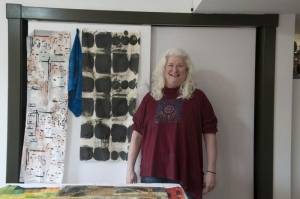 Welcome back to WorkSpace, a series featuring an inside look at the places where local artists and creatives roll up their sleeves and take care of business. Today, we are going to see the amazing work of Deborah Fell.
Welcome back to WorkSpace, a series featuring an inside look at the places where local artists and creatives roll up their sleeves and take care of business. Today, we are going to see the amazing work of Deborah Fell.
“I choose cloth to make art. Maybe it is because of the connection to historical quilt makers or maybe it is because of the pink cotton dress I wore as a child during a pivotal time in our family life; I studied the weave and color of this dress when I wanted to forget the difficult questions being asked of me. The tactile quality imprinted within me forever.“
Smile Politely: When and how did you decide to become an artist?
Deborah Fell: I have always been an artist. My path to quilt making, however, was not direct. After children entered my life, I dreamed of being able to give them a quilt. I wanted to be able to hand something down to my children that helped them connect the past to the future. The need to create history was what I longed for as a child. Learning to quilt allowed me to give tangible history to my children.
And then something happened—one of those phone calls came that brings you to your knees. A loved one killed instantly in a car accident. Staying up all night, I made a quilt top that did not look like any other quilt I had ever made. This cloth construction spoke to me as an image, even though I had never heard of an art quilt. A year later I enrolled in my first workshop in this medium. The pink cotton dress of long ago brought me full circle; it felt like home.
A change in my work took place after September 11, 2001; things were not so clear to me. The year the World Trade Center was destroyed was the year we constructed our long-awaited dream house. The images that made sense and brought comfort to me were the simple ones of squares and rectangles. My work started to reflect a more simple line and style. My art has always provided a thread of sanity when nothing else makes sense.
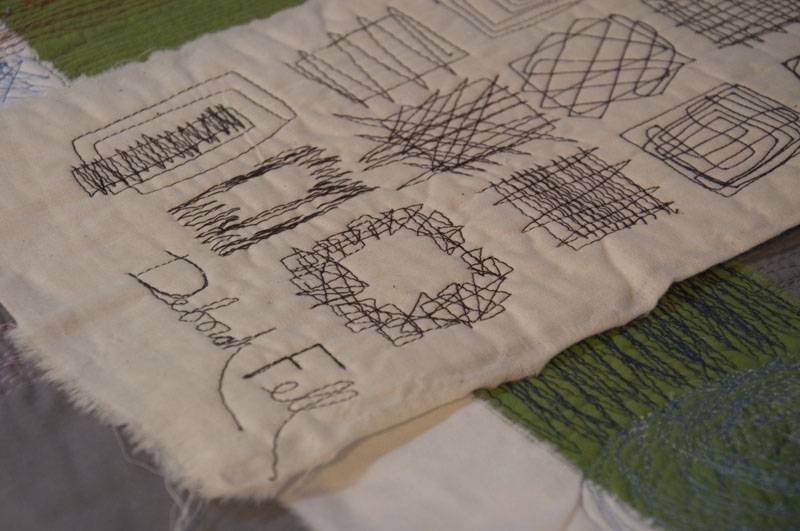
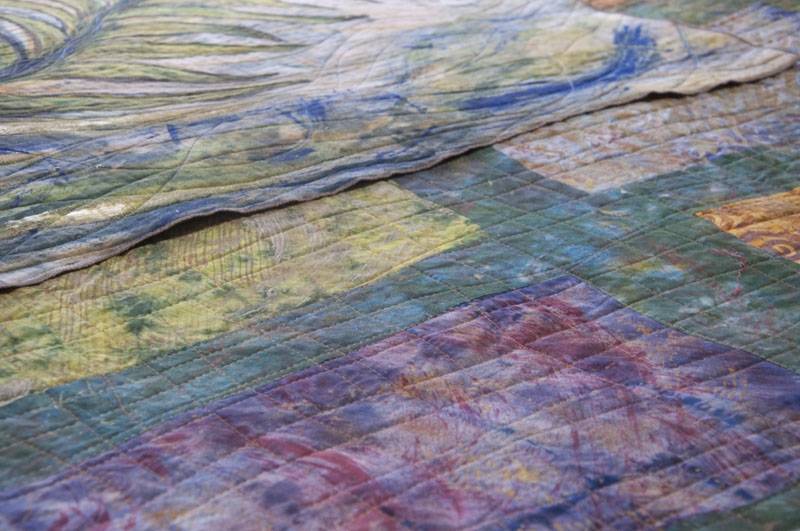
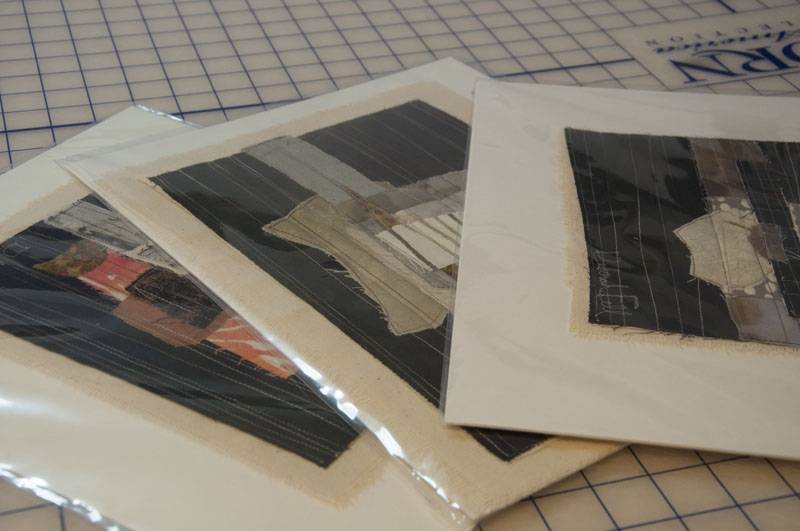
SP: What or who are your influences?
Fell: My greatest influence is nature & my experiences. I am an artist and my medium is quilting. My tools include natural fibers, fiber reactive dyes, textile paints, digital photo transfers, stitching, and found objects. I create depth, movement and ambiguity using line and color.
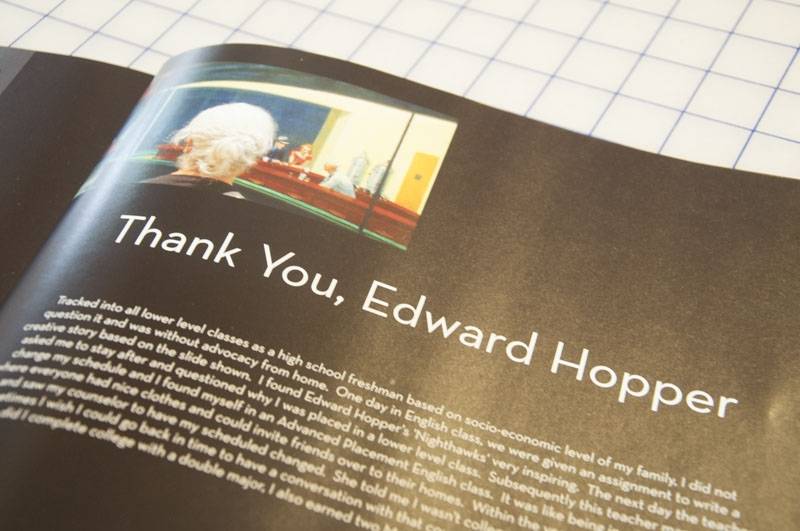
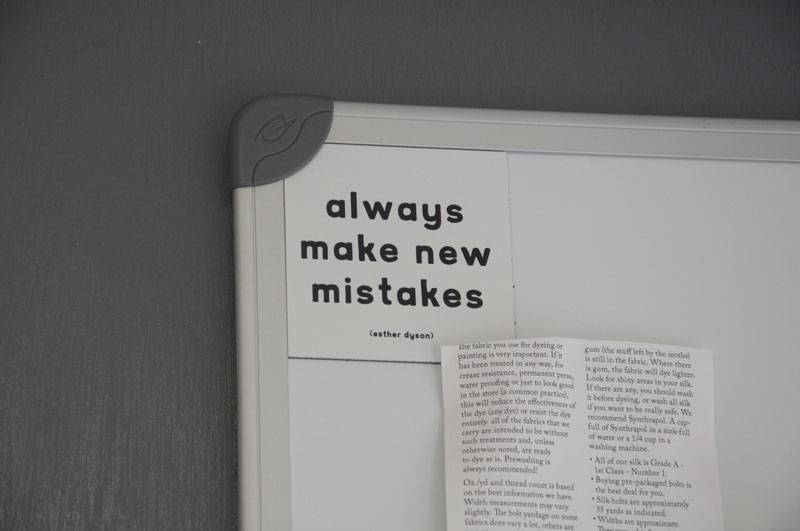
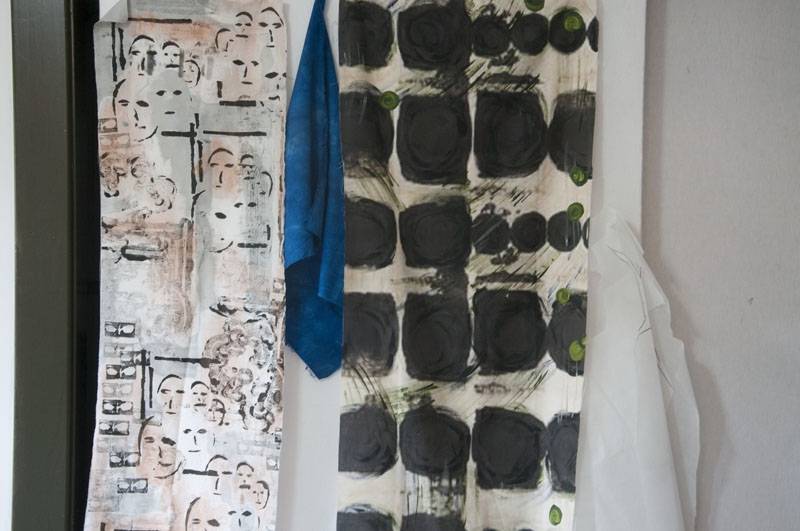
SP: Who would you like to collaborate with and why?
Fell: Joan Drape—my aunt—but she died about ten years ago.
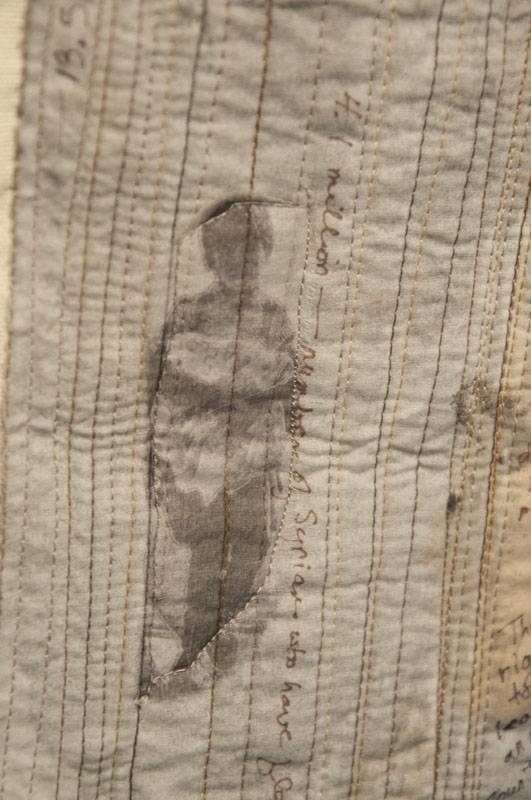
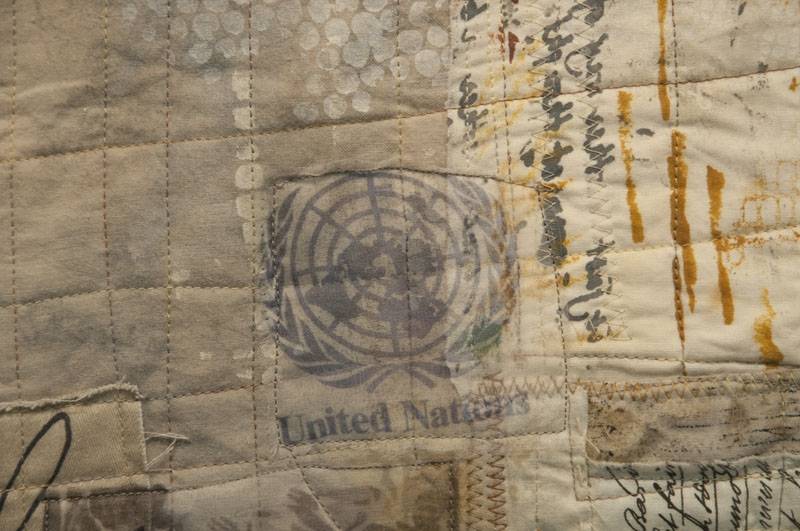
SP: Tell us about your workspace
Fell:My husband and I built our house in 2002. As an architect, it was a life dream. Camping vacations allowed us to save a lot of money in order to build our house in the woods. Our street is called Raintree Woods—hence, Raintree Woods Studio! I teach workshops out of my studio as well as around the country.
Here’s a description from my website:
Raintree Woods Studio Workshops are held in Deborah Fell’s Urbana, Illinois studio. With 33 years of teaching experience in public high school, Deborah now offers low enrollment art quilt workshops in a beautiful retreat setting in the woods. If you have ever wanted to learn how to quilt, to dye fabric or increase your design skills, then these workshops might be for you. Most supplies are included in the workshop fee. Along with that, machines are provided for workshops that require machines so you don’t have to haul them in. Workshops range from a few hours in length to all day workshops. Workshops also range from hands-on dyeing & quilting to finding information for your art.
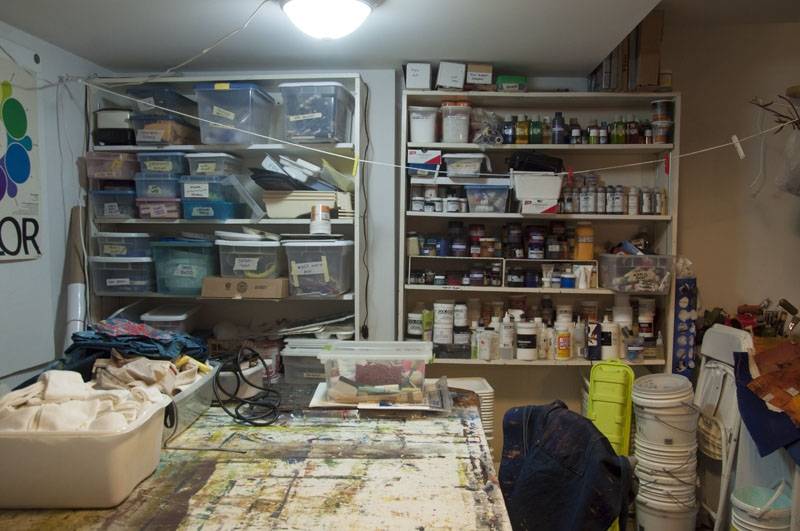
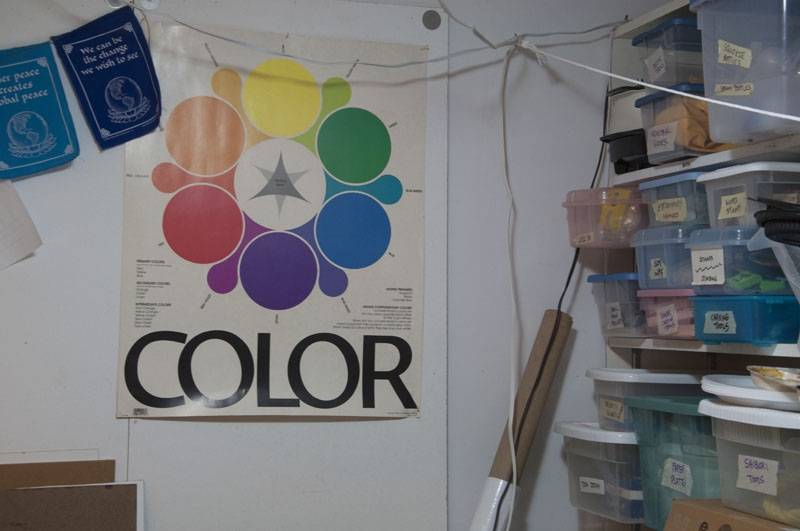
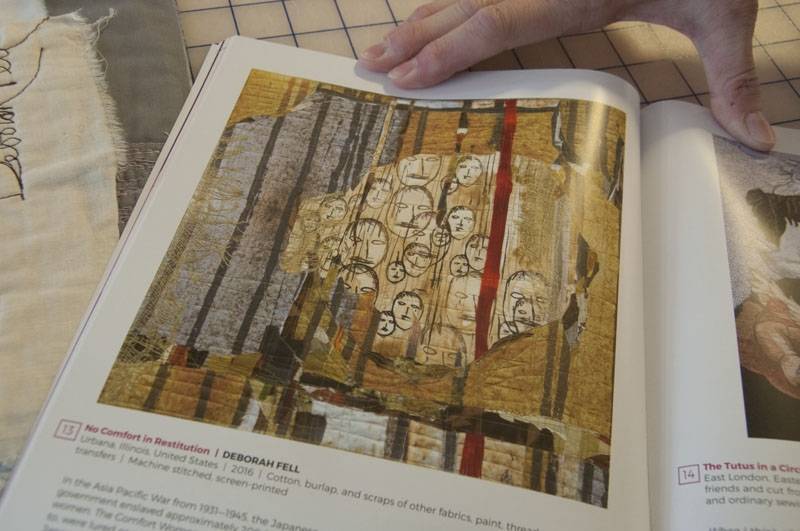
SP: Choose a piece of your artwork and explain it in detail
Fell: Witness Trees—Art Statement:
Dichotomy struck me the most at the Bergen-Belsen Concentration Camp Memorial in Lower Saxony in northwestern Germany this past month. The quiet whisper of trees overlooking the site where 50,000 perished under Nazi terrorism seemed to contradict the harsh, enormous mounds of mass graves. It was as if the birch trees were witnesses. The trees were there. The trees could remember.They saw it all.
The first photos of the Nazi regime’s devastation in the concentration camps were not made public until the British liberated Bergen-Belsen on April 19, 1945. According the Holocaust Survivors and Remembrance Project:
…the BBC reporter on the scene, Richard Dimbleby, had actually compiled his report four days earlier on April 15, 1945, hours after he arrived at the camp…his bosses in London said they found it so hard to believe his report that for four days they refused to broadcast it. Finally, on April 19, 1945, after Dimbleby—one of BBC’s leading correspondents—threatened to resign if the BBC didn’t broadcast his account, the BBC broadcast it. Dimbleby broke down five times while trying to record descriptions of the stench of decomposing flesh, the pyramids of starved and emaciated corpses, some still dying, others waiting to be buried, with arms and legs were like matchsticks, their bones poking through their skin.
A few days later, British army film of soldiers bulldozing thousands of stick-like corpses into mass graves at the camp shocked the world and brought home the barbarity of the full Nazi regime for the first time. Some of the pictures showed naked bodies with missing hearts and livers, people alive with no teeth or hair. Until that stage of the war there had been no images of what had happened in the camps.”
The world was naïve up until that point. And then the world changed forever. Like many times in our history, war left its imprint within the very core of humanity.
I can see the world no other way than seeing it as an artist. As I walked solemnly through the Bergen-Belsen Memorial, I felt that there was witness to the horrible atrocities. And the witnesses are still standing.Look closely—you will find eyes. Dig deeper and you will find the skeletons. War isn’t ugly, it is horrifying. Like this art quilt, war should make us feel uncomfortable. Ironically in the United States, the birch tree has been designated as the National Memorial Trees for Mothers.
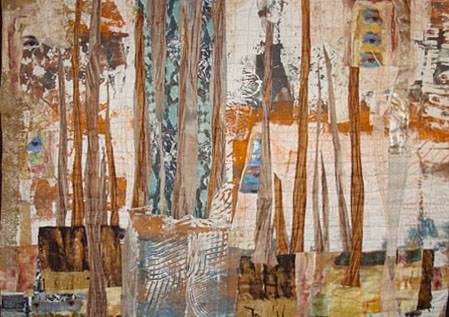
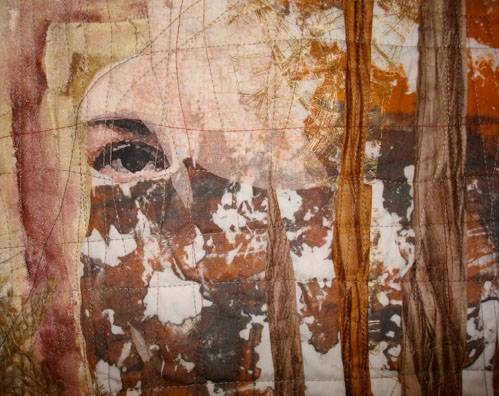
SP: What movie would you recommend to watch and why?
Fell: Shawshank Redemption. Because it gives me hope.
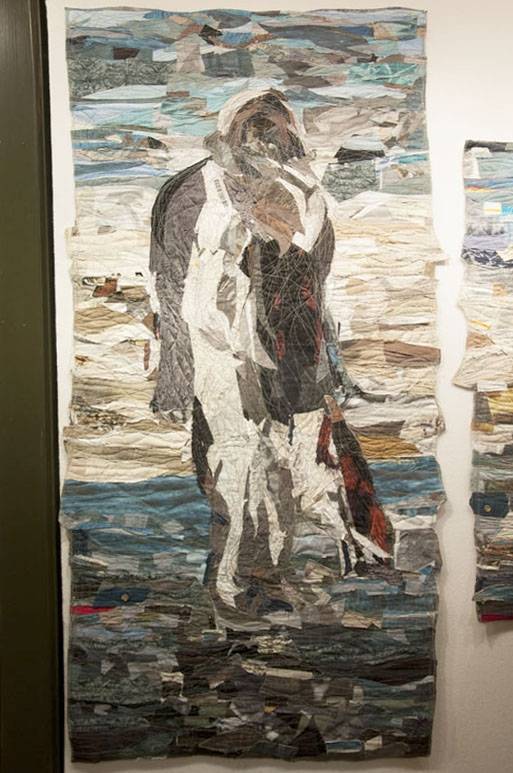
SP: What is your favorite spot in C-U?
Fell: My home because it fills my soul with peace.
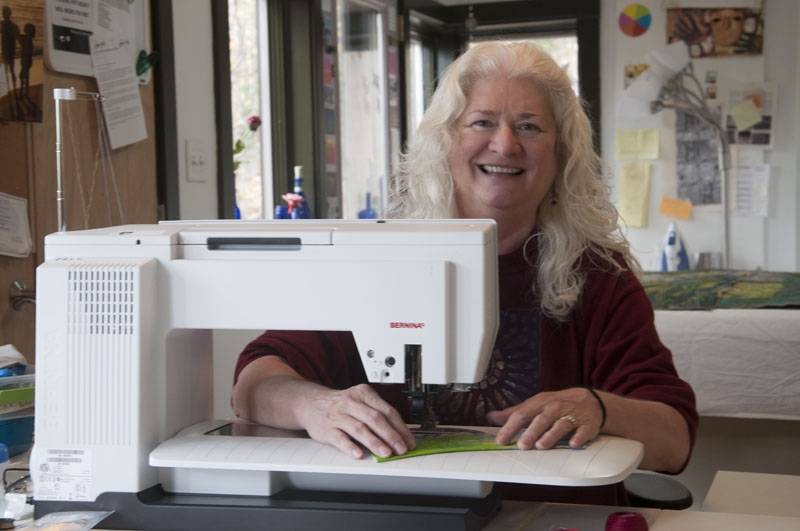
SP: What do you think about the art scene in C-U?
Fell: C-U is a diamond shining through cornfields. It is a community of diversity, growth and a dynamic art scene. The arts in our community are celebrated in many ways such as the Craft League of Champaign-Urbana and 40 North.
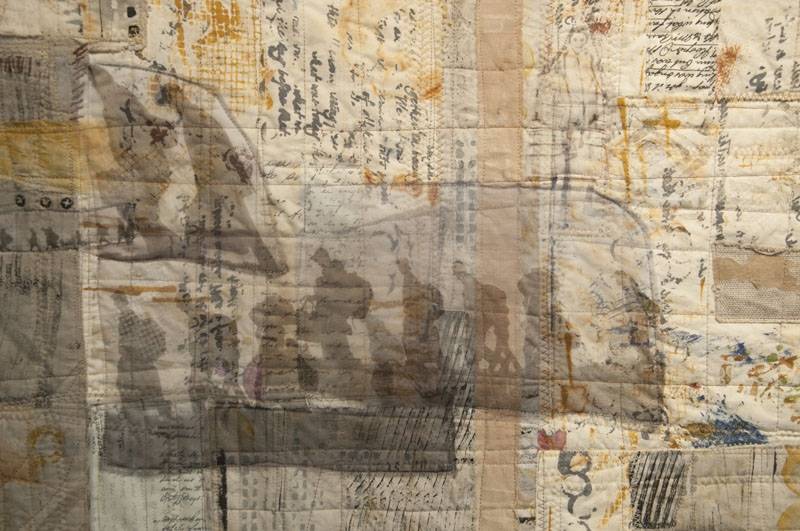
SP: Where, when and how can we see your work?
Fell: My website!
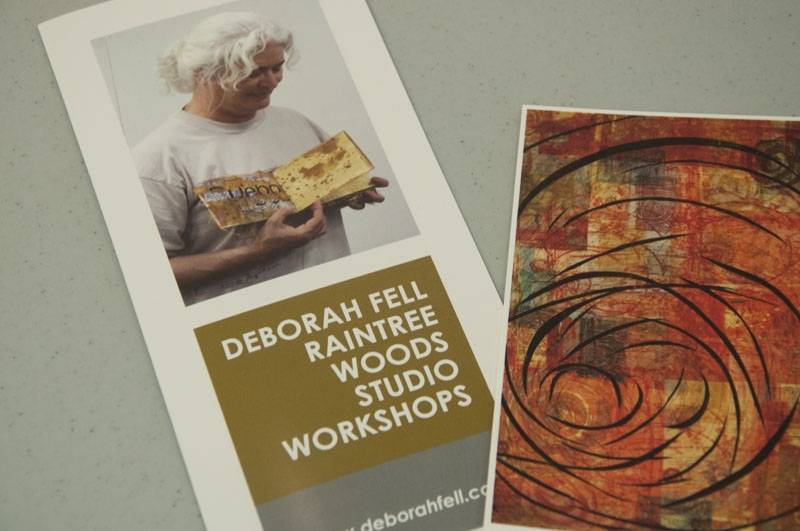
About the author: Jimena Oliver
Jimena is a photographer at Smile Politely. Find more of her work and photographs online:








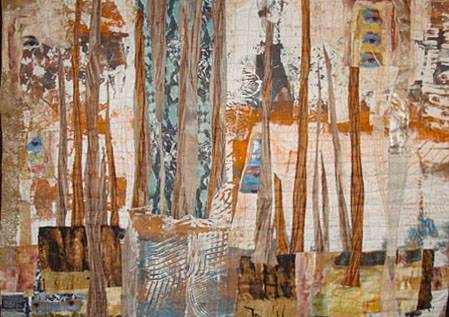
 About the author: Jimena Oliver
About the author: Jimena Oliver